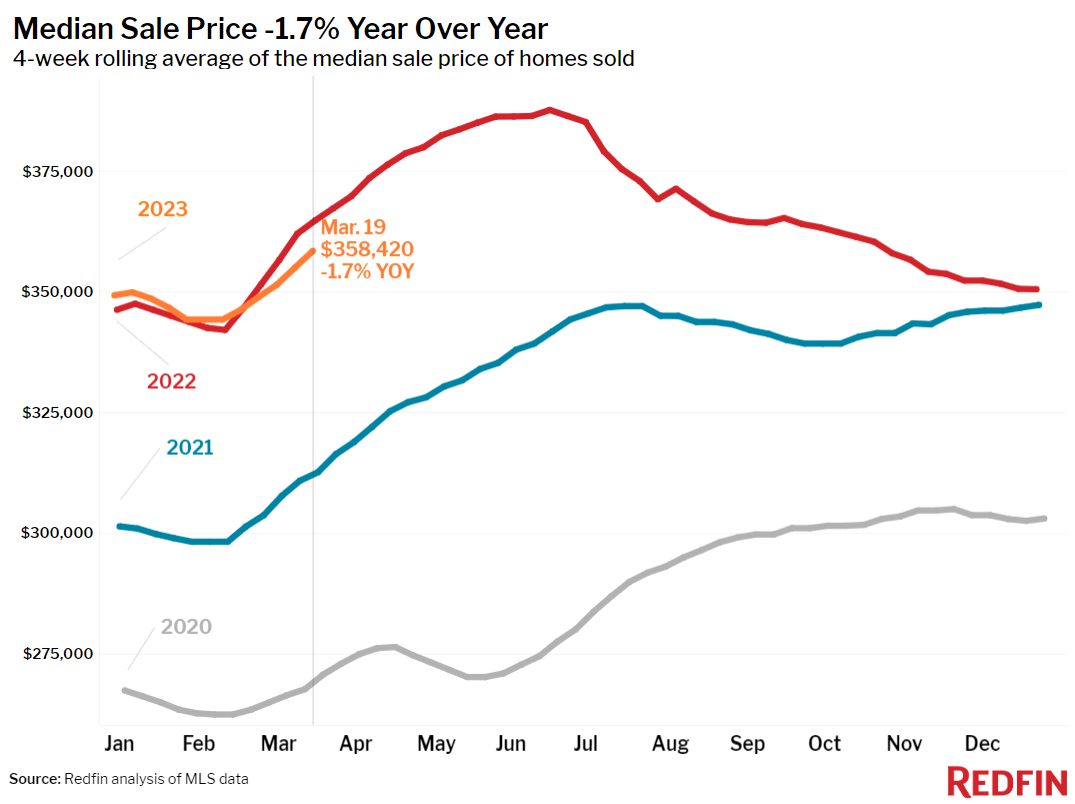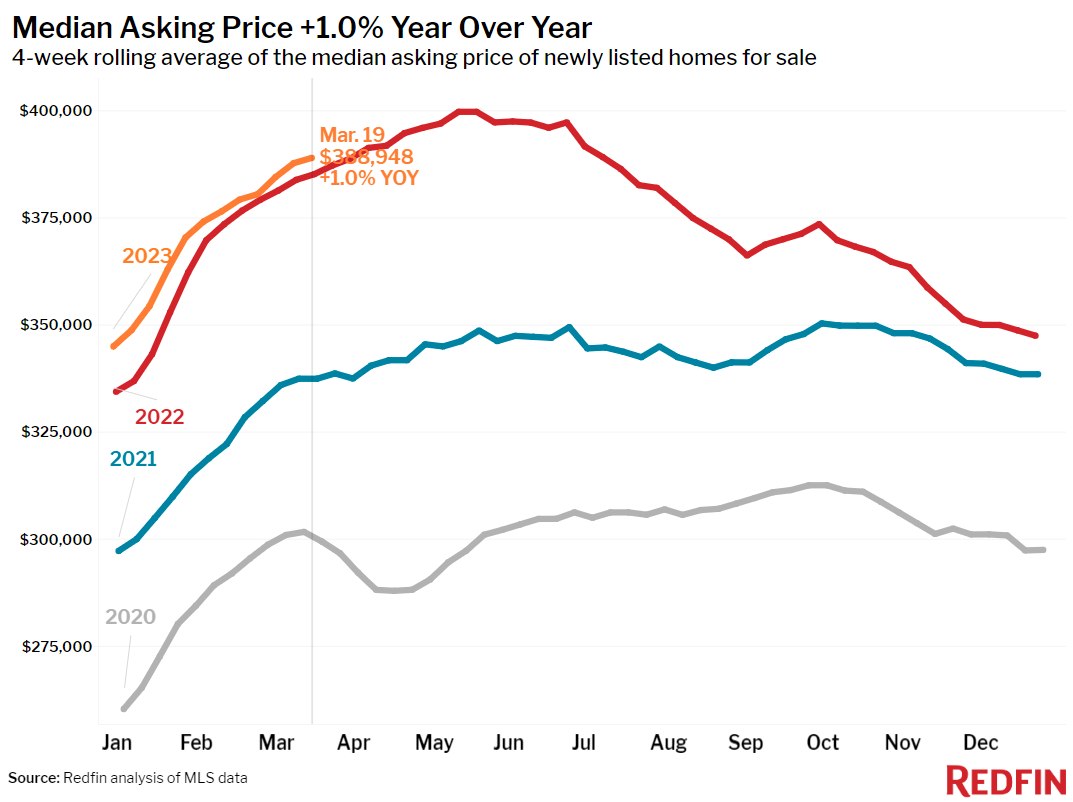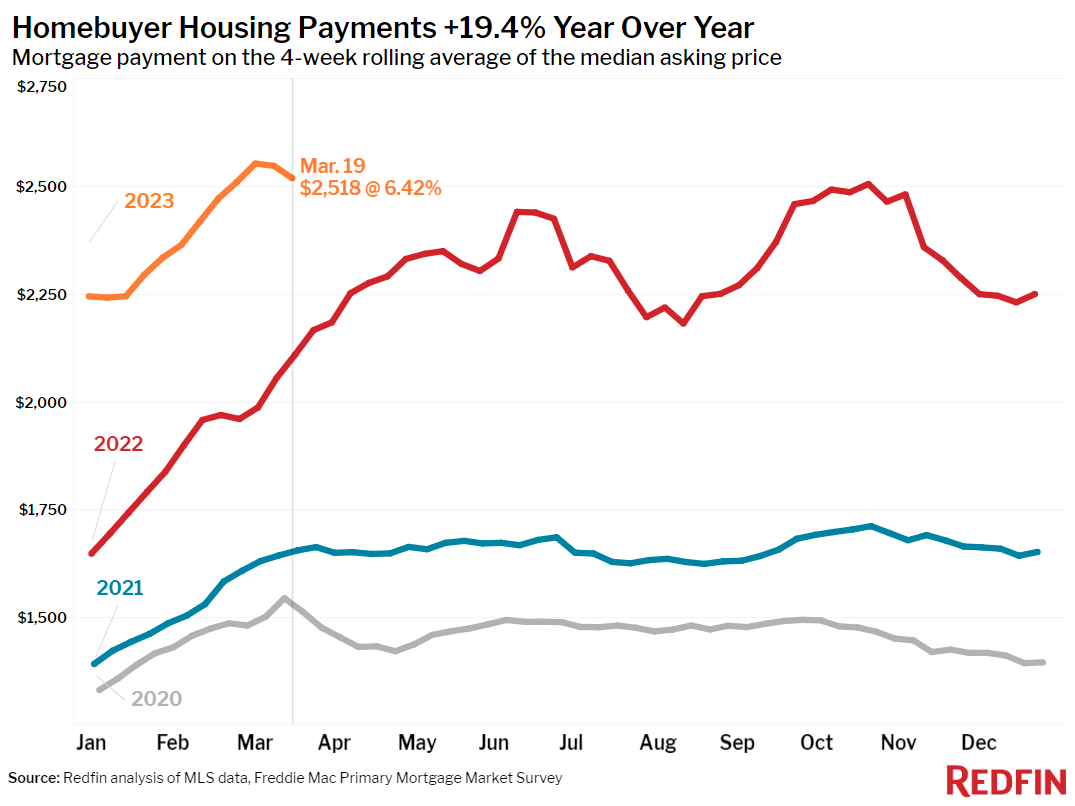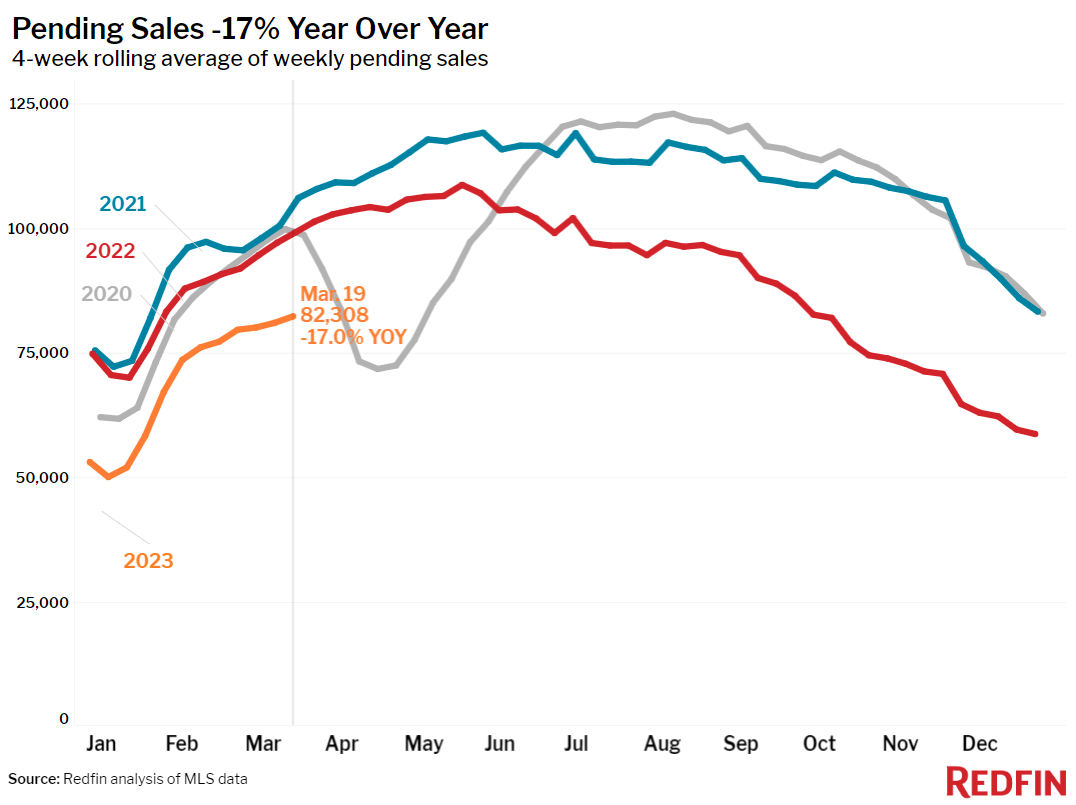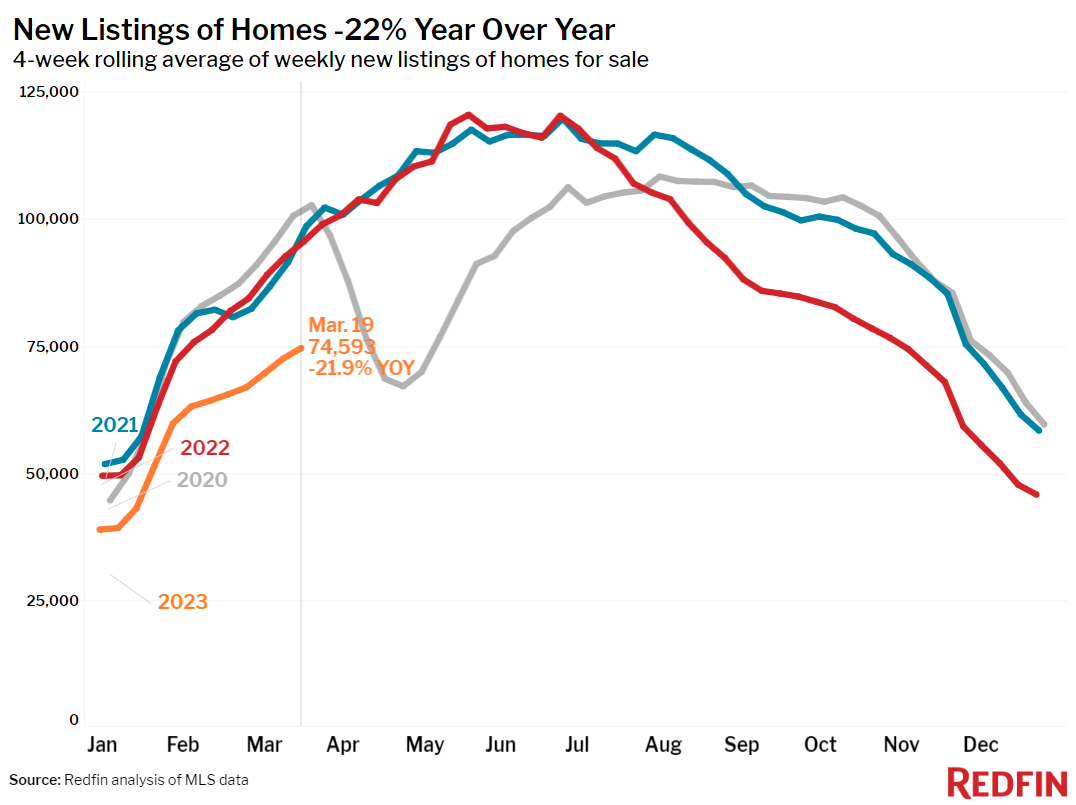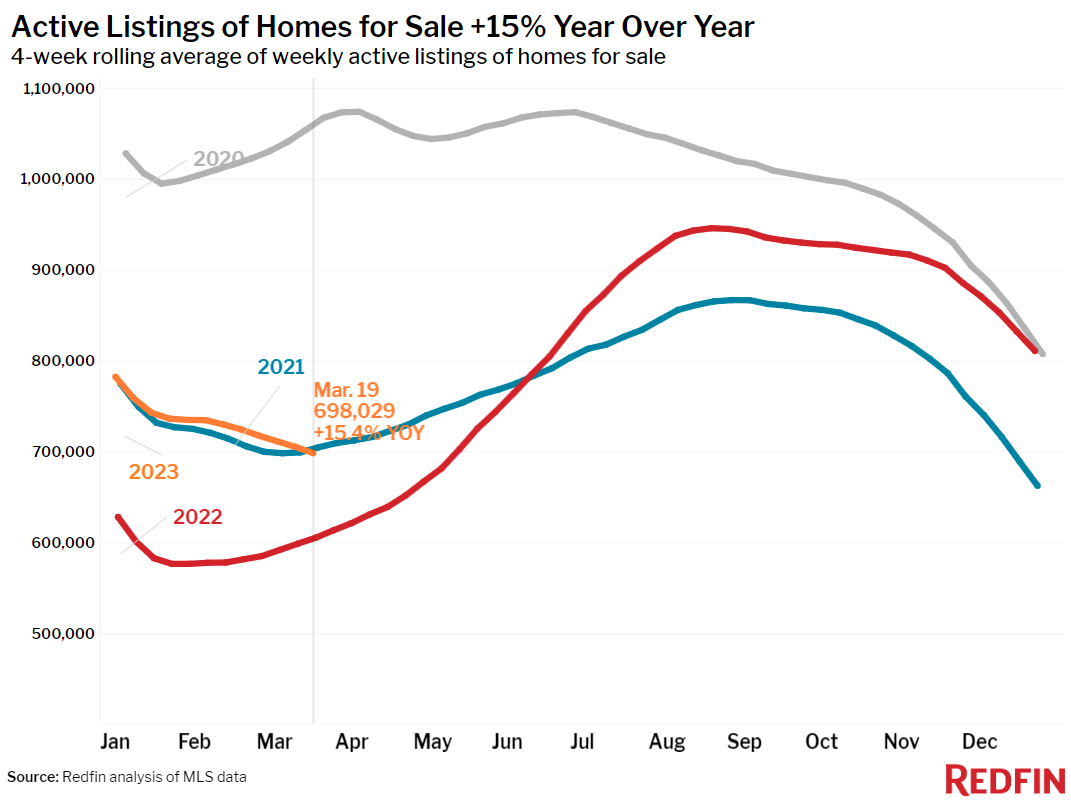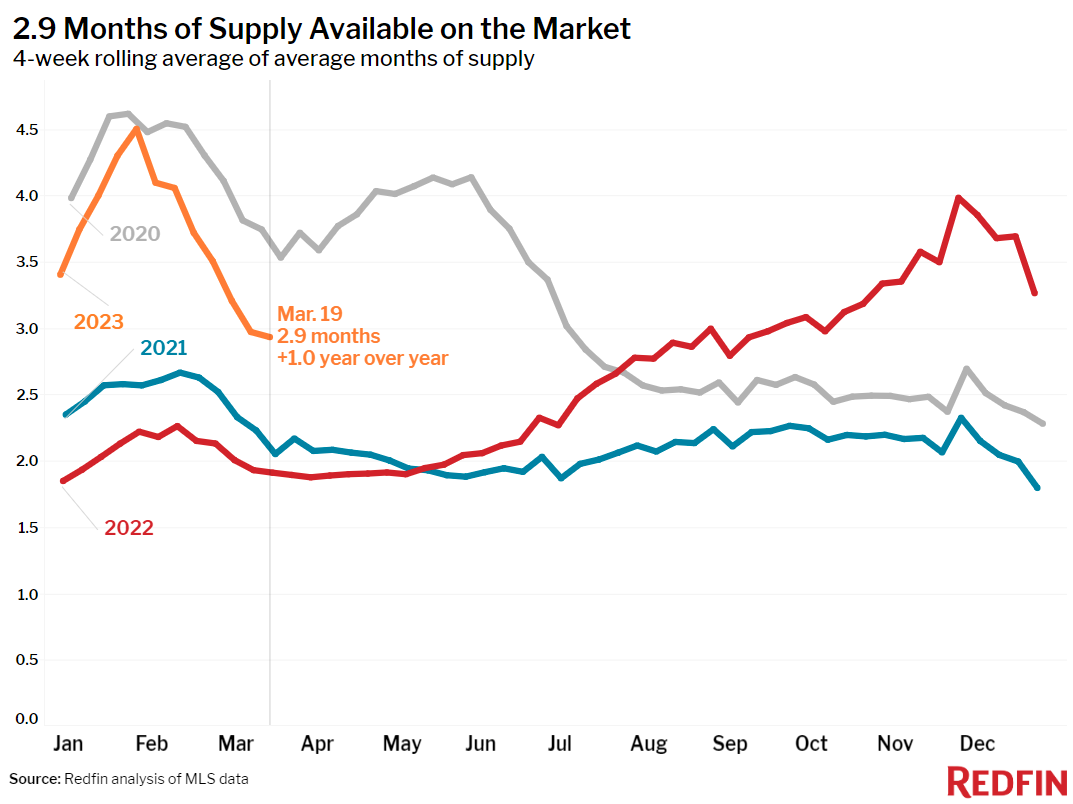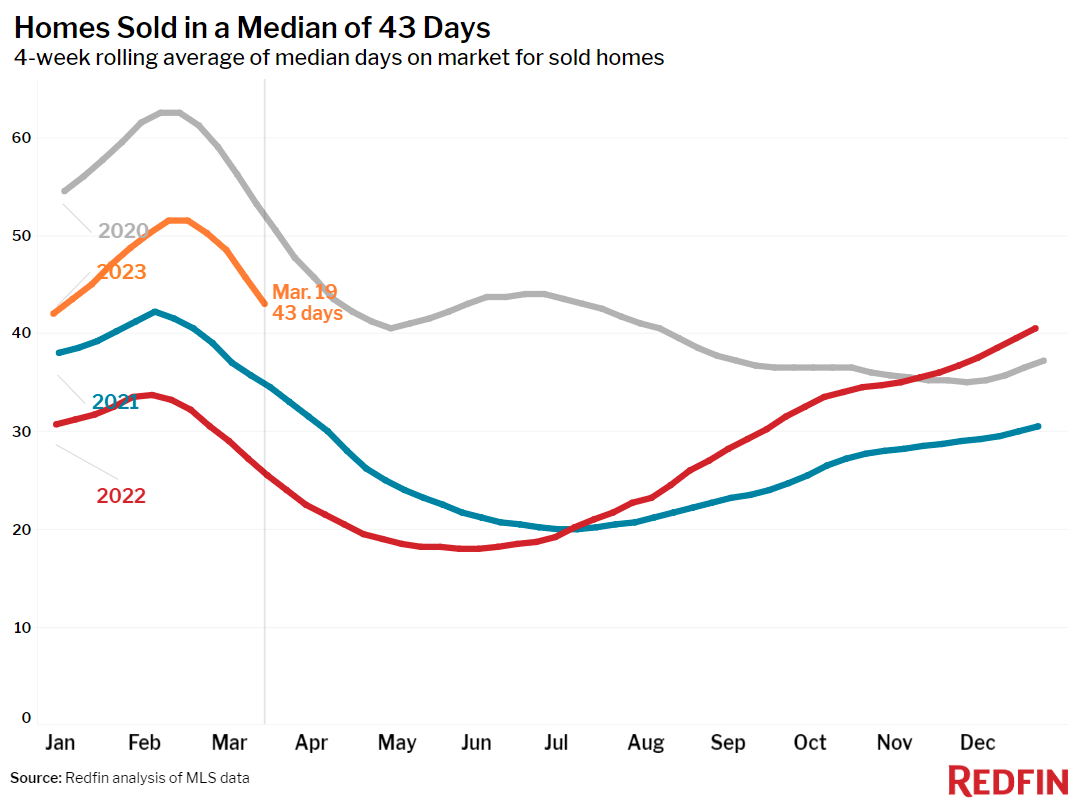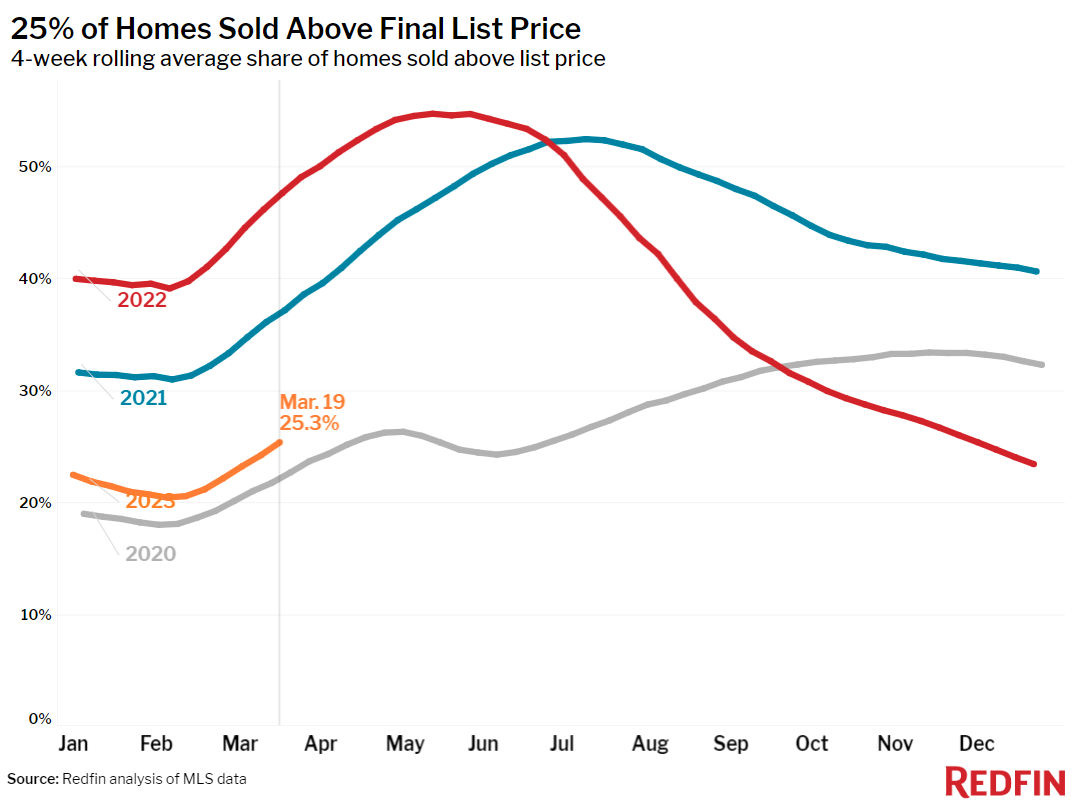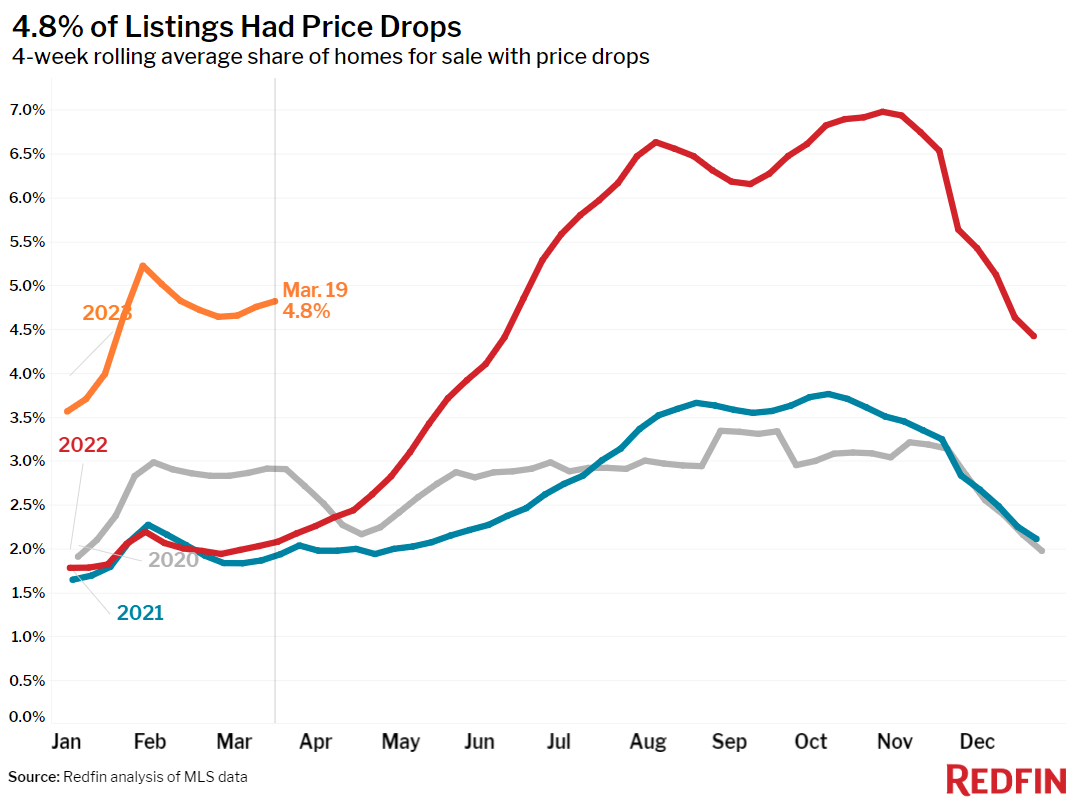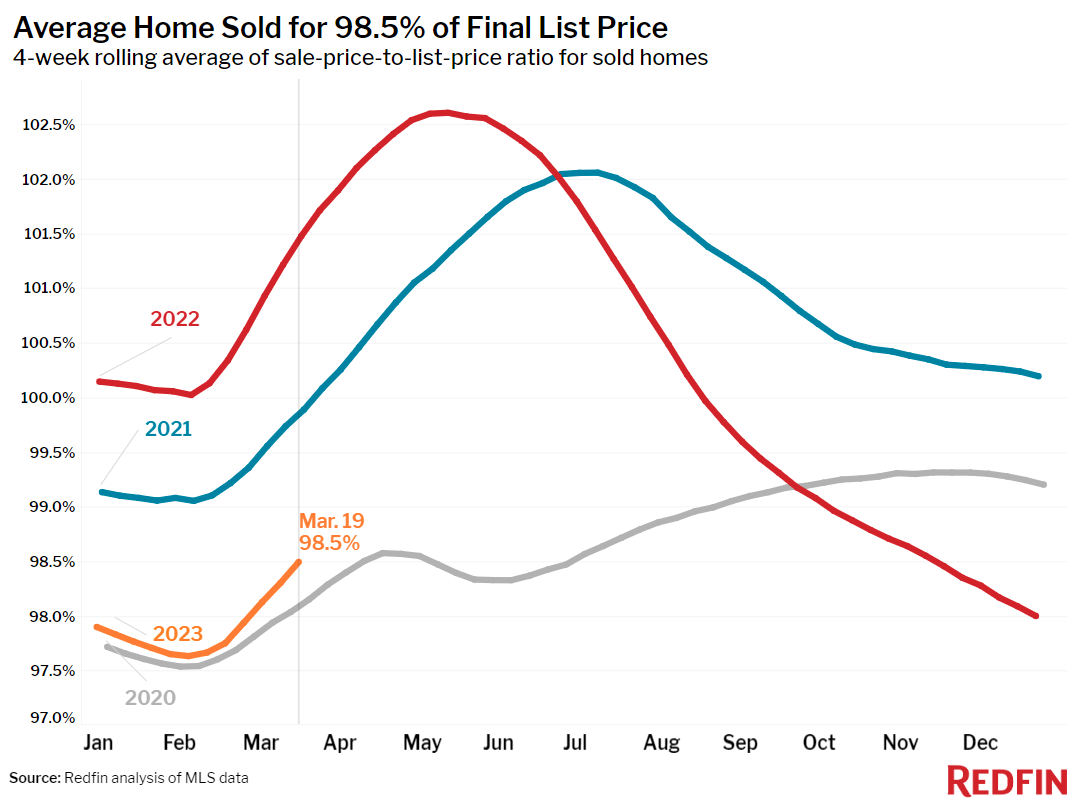Homebuying demand persisted as mortgage rates declined for the second week in a row after the Fed announced it will only modestly hike interest rates. But limited supply is another barrier for buyers, who are competing for the few homes on the market.
This week’s news that the Fed is modestly hiking interest rates and may pause them sooner than anticipated brought mortgage rates down for the second week in a row. Overall, the Fed’s announcement doesn’t change our overall housing-market outlook for this spring; mortgage rates are likely to temporarily decline but not plummet, and demand is likely to swing up and down based on fluctuations in rates and availability of homes on the market.
“We’re not seeing the typical spring seasonal increase in business,” said Boise Redfin agent Shauna Pendleton. “There’s no seasonality; homebuyers and sellers are hyper-focused on mortgage rates. If rates end the week down, all of a sudden buyers are out there making offers. If rates end the week high, buyers disappear.”
This week, demand ticked up as declining mortgage rates brought buyers some relief. Average daily rates dropped from 6.75% to 6.45% after the Fed’s announcement and the average weekly rate dipped to 6.42%, bringing the typical U.S. homebuyer’s monthly housing payment down from the peak it reached two weeks ago. Mortgage-purchase applications are up 17% from a month ago after increasing for the third straight week, and the number of homebuyers contacting Redfin agents for tours and other services rose this week.
But prospective buyers are struggling with tight supply, as sellers are typically slower to return than buyers. New listings of U.S. homes for sale fell 22% from a year earlier during the four weeks ending March 19, one of the biggest declines since the housing market nearly ground to a halt in the beginning of the pandemic (new listings fell slightly more in December 2022). Many would-be sellers are reluctant because they want to hang onto a low mortgage rate–nearly all homeowners have a rate under 6%–and because they’re also buyers struggling with low inventory.
Because there’s so little to choose from, homebuying speed is picking up even while rates stay high and demand remains low compared with last year. Nearly half of homes that went under contract had an accepted offer within two weeks of hitting the market, the highest share since June. That’s partly due to typical seasonality, as the market usually picks up speed as spring starts, but lack of inventory is causing homes to sell faster than expected when buyers are contending with 6%-plus rates.
“There are plenty of serious buyers out there, but there’s not enough inventory,” said San Jose Redfin agent Angela Langone. “Anything that comes on the market at a decent price in a desirable location is getting multiple offers. The best strategy right now is to be aware of every home that’s coming on the market soon and be the first to see it.”
Competition could pick up more as we enter spring if mortgage rates stay closer to 6% than 7%, which is more likely after the Fed’s announcement.
“The banking-industry chaos of the last few weeks likely prevented the Fed from making a big, inflation-fighting hike this week that could have sent mortgage rates soaring,” said Redfin Chief Economist Daryl Fairweather. “They kept the hike small partly because banking turmoil naturally combats inflation. As a result, the housing market is in a better place now than it was a few weeks ago.”
“Mortgage rates are unlikely to increase again unless the next inflation report is worse than expected,” Fairweather continued. “Sidelined buyers should be on high alert in the coming days and weeks, which could offer a window to lock in a rate closer to 6% than 7%.”
This week’s report excludes the Redfin Homebuyer Demand Index due to a data-collection issue. It will be back next week.
Unless otherwise noted, the data in this report covers the four-week period ending March 19. Redfin’s weekly housing market data goes back through 2015.
Refer to our metrics definition page for explanations of all the metrics used in this report.
